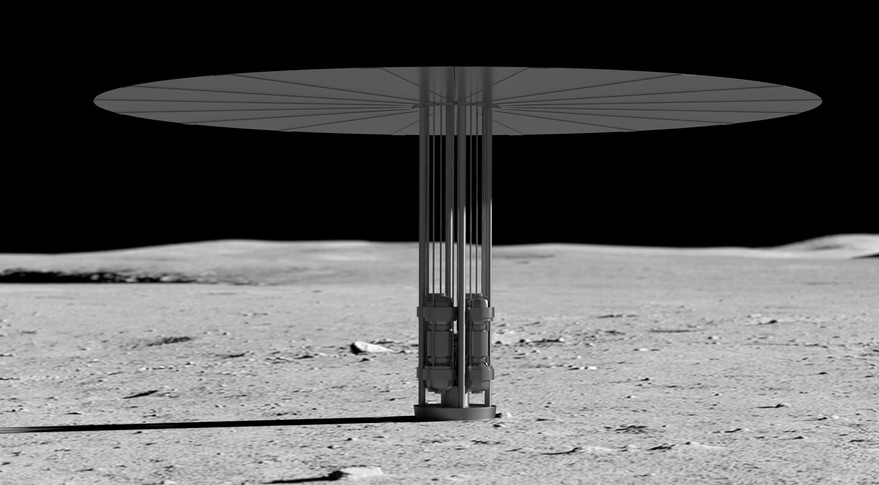WASHINGTON — The White House released a new space policy directive Dec. 16 intended to serve as a strategic roadmap for the development of space nuclear power and propulsion technologies.
Space Policy Directive (SPD) 6, titled “National Strategy for Space Nuclear Power and Propulsion,” discusses responsibilities and areas of cooperation among federal government agencies in the development of capabilities ranging from surface nuclear power systems to nuclear thermal propulsion, collectively known as space nuclear power and propulsion (SNPP).
“This memorandum establishes a national strategy to ensure the development and use of SNPP systems when appropriate to enable and achieve the scientific, exploration, national security, and commercial objectives of the United States,” the 12-page document states.
SPD-6 sets out three principles for the development of space nuclear systems: safety, security and sustainability. It also describes roles and responsibilities for various agencies involved with development, use or oversight of such systems.
Much of the document, though, is a roadmap for the development of nuclear power and propulsion systems. It sets a goal of, by the mid-2020s, developing uranium fuel processing capabilities needed for surface power and in-space propulsion systems. By the mid to late 2020s, NASA would complete the development and testing of a surface nuclear power system for lunar missions that can be scalable for later missions to Mars.
SPD-6 calls for, by the late 2020s, establishing the “technical foundations and capabilities” needed for nuclear thermal propulsion systems. It also sets a goal of developing advanced radioisotope power systems, versions of radioisotope thermoelectric generators (RTGs) long used on NASA missions, by 2030.
Many of the initiatives outlined in SPD-6 are already in progress. NASA has been working with the Department of Energy (DOE) on a project called Kilopower to develop surface nuclear reactors, including efforts to seek proposals to develop a reactor for use on the moon. NASA has also been studying nuclear thermal propulsion, an initiative backed by some in Congress who have set aside funding in NASA’s space technology program for that effort.
“We have these individual initiatives going on — nuclear thermal power, the Kilopower activities — and what we’re trying to do is pull together a common operating picture for Defense, NASA and DOE,” said a senior administration official, speaking on background about SPD-6.
That roadmap and schedule is also intended to prioritize those activities. Surface nuclear power is needed in the nearer term to support lunar missions later in the decade, particularly to handle the two-week lunar night. Nuclear thermal propulsion, as well as alternative nuclear electric propulsion technologies, are less critical since they are primarily intended to support later missions to Mars.
“Those things are important for going to Mars,” the official said of nuclear propulsion, “but first we’re doing the moon and leveraging terrestrial capabilities and technologies to put that foothold on the moon.”
Another issue addressed in SPD-6 is the use of different types of uranium. Tests in 2018 as part of the Kilopower program used highly enriched uranium, or HEU. That project, and discussions by NASA and DOE to use HEU for flight reactors, raised concerns in the nuclear nonproliferation community. They were worried that it could set a precedent for renewed production of HEU, which is also used in nuclear weapons.
SPD-6 restricts, but does not prohibit, the use of HEU in space nuclear systems. “Before selecting HEU or, for fission reactor systems, any nuclear fuel other than low-enriched uranium (LEU), for any given SNPP design or mission, the sponsoring agency shall conduct a thorough technical review to assess the viability of alternative nuclear fuels,” it states.
“We want to keep those proliferation concerns foremost in our minds,” a senior administration official said. “We don’t want to necessarily rule out HEU if that’s the only way to get a mission about, but we want to be very deliberate about it.”
The policy, an official said, “sets an extremely high bar” for non-defense use of HEU on space systems, citing progress on high-assay low enriched uranium, which can provide power levels similar to HEU systems with only a modest mass penalty.
The White House released SPD-6 a week after it issued a new national space policy during a meeting of the National Space Council. That broader policy briefly addressed space nuclear power and propulsion, discussing roles for various agencies, but did not mention the roadmap or other details found in SPD-6.
Many thought the release of the national space policy would conclude the administration’s work on space policy, making SPD-6 something of a surprise. A senior administration official said work on various space policy directives and the national space policy had been slowed down by the coronavirus pandemic, but wouldn’t rule out additional announcements in the remaining five weeks of the Trump administration.
